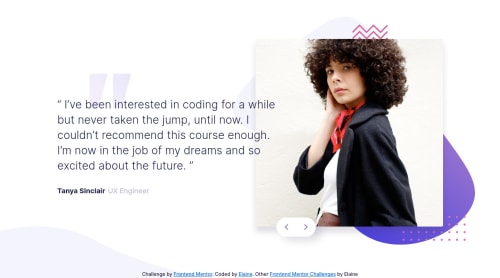Responsive image slider/carousel built with SCSS and plain JS

Solution retrospective
I've been wanting to build a slider because one of the recent tutorials from Kevin Powell features an FEM page with a slider. The most challenging part wasn't building the actual slider but positioning all the SVGs and to make sure they can be viewed optimally while still maintaining a good distance/relation with the surrounding elements. It's also interesting that one of the requirements is to use arrow keys for the slider because I've read that for a screen reader user, it's best to have users use the tab key for navigation and not so much the arrow keys. I did come across some insightful articles on the challenges of building an accessible slider/carousel, and I do hope to work on this some more later. I also hope to put in some opacity transition later on, but I think on the whole, everything works for now, and I think this was a good attempt in building a slider that can be accessible.
Do let me know if something isn't working as it should. Happy testing!
Please log in to post a comment
Log in with GitHubCommunity feedback
No feedback yet. Be the first to give feedback on Elaine's solution.
Join our Discord community
Join thousands of Frontend Mentor community members taking the challenges, sharing resources, helping each other, and chatting about all things front-end!
Join our Discord